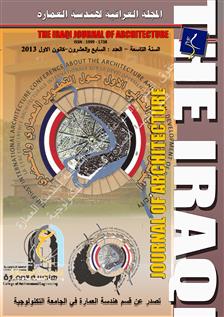From courtyard to monument: Effect of changing social values on spatial configuration of "the cities of the holy shrines" in Iraq
Abstract
The cities of the holy shrines of Iraq constitute historic cores of big city centers that have grown and developed since hundreds of years ago. They were first established as shrines for religious personalities (Muslim, Christian, Jewish or from any other religion). The importance of the holy shrines is measured by the number of pilgrims visiting the shrine in any religious event. The most significant cities among these are (NAJAF, KARBALA, SAMARRA, KADHIMIYA), where the number of pilgrims may reach up to 2 million a day during religious events. Therefore, these cities represent main economic hubs of major cities according to the density of visitors during the religious tourism .
The original urban patterns of these cities are unique and prominent among other historic cores in the Middle East and Islamic cities. They have two main elements; the first is the organic compact traditional urban fabric and the second is the holy shrine building, which consists of the courtyard and the shrine. Likewise, the city does not embrace any other monument except the holy shrine with its minarets and domes. In contrary, there currently appears an obvious change in the cities of the holy shrines as a result of rational urban planning intervention. They are now connected together to form historic cores to the movement network in the big city and its new sectors. In spite of these changes, these cities continue to relatively preserve its urban system. Nevertheless, the main challenge of these historic cores is manifested in the changing social values and its impact on the spatial configuration, including the change of the main urban space of the city into a monument surrounded with a street that is accessed via wide vertical streets penetrating the old urban fabric, instead of the old Winding narrow pathways.
The Paper seeks to understand the effect of social value changes to the spatial configuration of these historic urban cores that lead to a conflict in the urban space values as a result of the impact of the linear streets and their new buildings, versus the continuity and the increased centrality of the urban structure arising from the increased. And the Paper also tries to find an answer to the following question: Is it possible to preserve the fundamental spatial configuration of the cities of holy Shrine which is based on Invariant social values despite the changed of morphological characteristics of the historic urban fabric
Downloads
You are free to use the work, but you have to attribute (refer to) the work in the manner specified by the author or licensor (but not in any way that suggests that they endorse you or your use of the work).
IRAQI J. ARCHIT & PLANN grants you the right to publish the metadata of the journal, it's issues and articles under the terms of the Creative Commons Attribution-ShareAlike 4.0 International License.
Author(s) hold the copyright of their aricles without restrictions. However, IRAQI J. ARCHIT & PLANN holds publishing rights for articles and their revisions once the article is published.
Authors can archive pre-prints (ie pre-refereeing) and post-prints (i.e. final draft post-refereeing) versions of the work they submitted to IRAQI J. ARCHIT & PLANN using non-for-profit open-access servers whether on author's personal website and/or institutional repositories including the university or research center where the author work.. For post-prints, only the IRAQI J. ARCHIT & PLANN’s as-published PDF version is permitted and the published source (IRAQI J. ARCHIT & PLANN’s website) must be clearly acknowledged within the archiving webpage.






